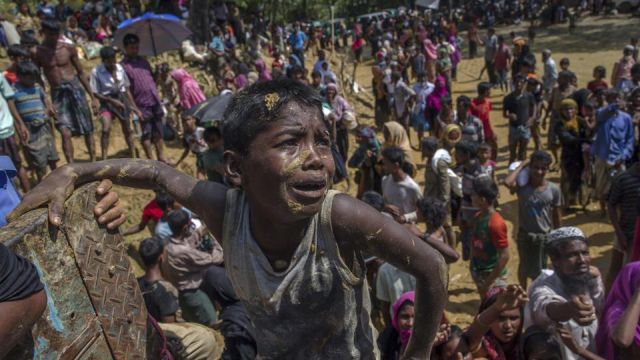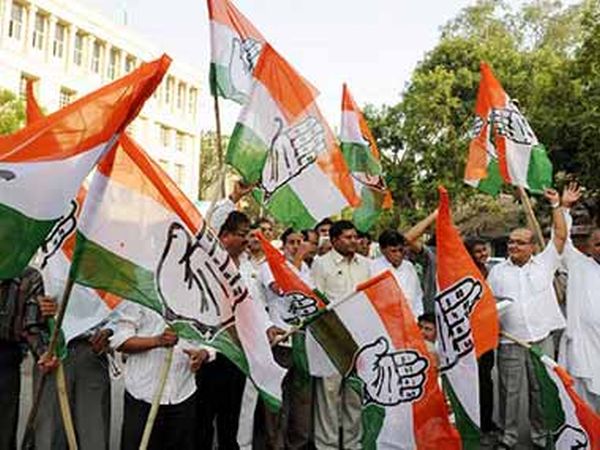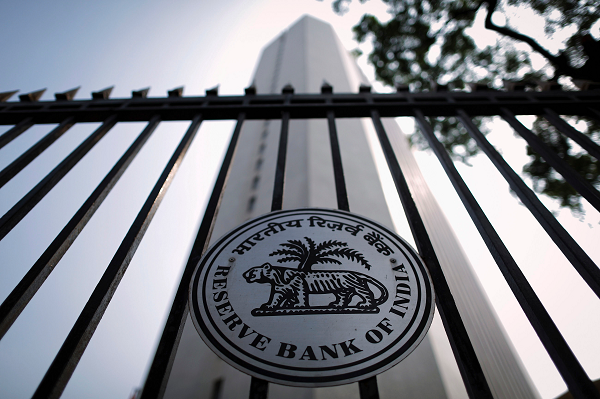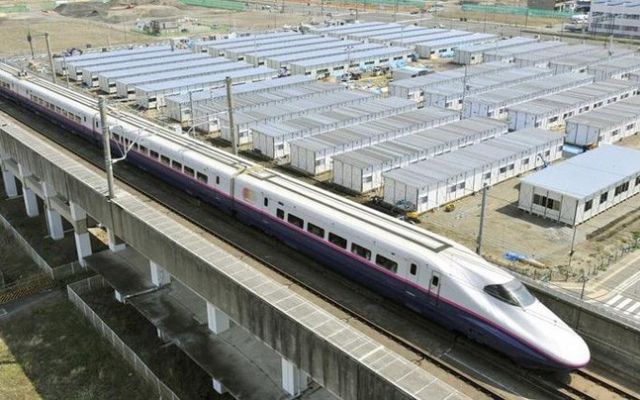
by admin | May 25, 2021 | News, Politics
 By Nikhil M. Babu,
By Nikhil M. Babu,
New Delhi : It is several days since 17-year-old Nurankis, mother of two, has heard from her husband after he left for Agra to look for a job.
Nurul Salam lost his job in Delhi after the Indian government termed Rohingyas — one of the world’s most persecuted minorities — as a “security threat”.
“I have been cooking only rice and potato for the past couple of days. That too, only twice a day. I have about Rs 20 left. We have nothing else,” Nurankis told IANS while sitting in her dark, one-room shack of blue tarpaulin and cardboard at the Shram Vihar slum of south Delhi.
IANS found several cases of Rohingyas being fired from jobs in Delhi, Jammu and Punjab because of their identity, after Prime Minister Narendra Modi’s government asked “state governments to identify and deport the Rohingyas”.
The government’s decision was later challenged in the Supreme Court and its judgement is awaited.
“One day, they (the employer) said ‘there is no work from today for people from Burma’,” Nurankis said about how Salam lost his job at Allana, a Ghazipur meat processing company in east Delhi.
Following this, Salam boarded a bus to Aligarh, about 150 km from Delhi, to look for a job, leaving behind his four-year-old son Ubaib and three-month-old daughter Rubina. “He called from Aligarh and said people were asking for Aadhaar Card for hiring him,” Nurankis said. “I do not know where he is now.”
People who lost their jobs after the government crackdown said it had become difficult to pay rent or even eat and in some cases were forced to relocate, leaving behind what little they owned.
Rohingyas, mostly Muslims, are an ethnic minority from Buddhist majority Myanmar, who have been denied citizenship and have been facing brutality from the Myanmar military.
More than 800,000 Rohingyas have fled Myanmar in the last five years as a result of violence, according to the United Nations High Commissioner for Refugees (UNHCR), and there are around 21,500 Rohingyas in India.
At a tea shop near Nurankis’ shack, 22-year-old Sayedul Amin remembered the day when Salam, he and around 30 other refugees lost their jobs.
“It was a normal day and we were working when the contractor came and told us that from that day there would be no jobs for people from Burma,” Amin said.
When the refugees asked for a reason, they were told that the government might deport them any time and the company would face problems for employing them.
“I do not know how I’m going to pay this month’s rent,” said Abdul Raheem, 30, one of the refugees fired from the company.
The company laid off between 25 and 40 Rohingya refugees, according to one of Allana’s security guards.
When reached for a comment, an Allana spokesperson said that Rohingyas were contract employees and they were laid off as a “pro-active measure” after the government’s move.
However, he said only seven or eight refugees were fired.
In Punjab, Mohammad Jubair and other Rohingya refugees were asked to leave from work.
Jubair sold his cycle, gas cylinder and parts of his shack and boarded a train to Hyderabad, where he is yet to find a job or build a shack.
In Jammu, Ashik Khurana, a 17-year-old Rohingya refugee, who used to work as a cleaner at the Jammu Tawi Railway Station with about 30 other refugees, said they were asked for Indian identity cards to continue.
After gathering all refugee workers, the in-charge said: “From today all workers from Burma who do not have an Aadhaar Card won’t be allowed to work here.”
Khurana said: “Where will I go for an Aadhaar Card? The UN had told us not to make any Indian ID card. “Most of us left (the job) after that.”
At a Rohingya settlement in Kanchan Kunj of Delhi, Mohammad Saleem, 35, leader of the camp, said: “It (settlement) was like a job market, but now hardly anyone comes here to call us for work.”
“When Modi is talking like this, people would obviously see us differently,” Dil Mohammad, 60, leader of Shram Vihar settlement, said, adding: “It’s better that the government rounds us up here and shoots us.”
(Nikhil M. Babu can be contacted at nikhil.b@ians.in)
—IANS

by admin | May 25, 2021 | Banking, Economy, News, Politics
 New Delhi : The Congress on Thursday hit back at Prime Minister Narendra Modi on his charge that banks were forced to give loans to select industrialists during UPA rule, saying bad loans increased in his regime.
New Delhi : The Congress on Thursday hit back at Prime Minister Narendra Modi on his charge that banks were forced to give loans to select industrialists during UPA rule, saying bad loans increased in his regime.
The Congress also demanded a probe by independent agencies into the issue.
“Yesterday (Wednesday) Modiji said that NPA is the biggest scam. We agree with it but we want to know who gave birth to it,” Congress spokesperson Randeep Singh Surjewala told reporters here.
Attacking the Modi government, Surjewala said: “When the Congress lost power in 2014, as per the Reserve Bank of India (RBI), gross NPA of public sector banks in 2013-14 was Rs 2,27,264 crore.
“And as per PIB (Press Information Bureau) press release dated October 24, 2017, this has increased in June 2017 to Rs 7,33,137 crore,” he said. “The NPA in 42 months of Modi government increased by Rs 5,05,873 crore.”
He said the gross NPAs of scheduled commercial banks in 2013-14 was Rs 2,63,372 crore.
“And as per the rating agency CARE, gross NPAs of scheduled commercial banks has increased to Rs 8,29,338 crore. Thus, in 42 months of Modi government, it has increased by 5,65,966 crore,” he said.
Surjewala also said that under Modi government, a total of Rs 1,88,287 crore loans of the industrialists were waived off.
“In 2014-15, the NDA government waived loans of Rs 49,018 crore, in 2015-16 it waived off Rs 57,586 crore of loans and in 2016-17 it waived off Rs 81,683 crore loans of industrialists,” he said.
“If he described NPA as the biggest scam, he should then answer why is such a big scam happening under his nose?” the Congress leader asked.
“The Prime Minister must also tell as to why has his government waived loans of wilful defaulters worth Rs 1,88,287 crore in the last three years?”
He dared the government to order a probe by independent agencies into the same.
On Wednesday, Modi attacked his predecessor Manmohan Singh and the UPA government, saying some of its “people” had forced banks to lend to some industrialists, which he described as the “biggest scam”, bigger than the 2G, coal and Commonwealth Games scams.
—IANS

by admin | May 25, 2021 | News, Politics
 By Kushagra Dixit,
By Kushagra Dixit,
New Delhi : The Modi government has spent a whopping nearly Rs 3,755 crore in three and half years on its publicity till October this year, an RTI revealed on Friday.
The expenditure on advertisements from April 2014 to October 2017 through electronic, print media and outdoor publicity is Rs 37,54,06,23,616, according to the RTI reply by the Information and Broadcasting Ministry.
The application was filed by Greater Noida-based social activist Ramveer Tanwar, a copy of which is with IANS.
According to the information, the central government spent over Rs 1,656 crore on electronic media advertisements, including — community radio, digital cinema, Doordarshan, Internet, SMS and TV.
For print media, the government spent more than Rs 1,698 crore.
On outdoor advertisements, which include hoardings, posters, booklets and calendars, the central government has spent over Rs 399 crore, the RTI reveals.
The amount spent on publicity blitz is more than the yearly budget allocated to some key ministries and government’s flagship programmes. The government’s allocation for “pollution abatement” in the last three years has been only Rs 56.8 crore.
In 2016, an RTI filed by Tanwar had revealed that the Centre spent over Rs 1,100 crore between June 1, 2014 and August 31, 2016, on advertisements featuring Prime Minister Narendra Modi.
The Ministry gave a break up of the expenditure according to which Rs 448 crore was spent from June 1, 2014 to March 31, 2015, and Rs 542 crore and Rs 120 crore spent from April 1, 2015 to March 31, 2016 and April 1, 2016 to August 31, 2016 respectively.
The expenditure was only for television, Internet and other electronic media and did not include expenditure on outdoor and print advertisements.
In 2015, another RTI had revealed that the Centre had spent nearly Rs 8.5 crore on newspaper advertisements for the Prime Minister’s monthly radio address “Mann Ki Baat” till July 2015.
The BJP and Congress had criticised the Aam Aadmi Party (AAP) government in Delhi for spending Rs 526 crore on advertising its achievements in 2015.
(Kushagra Dixit can be reached at kushagra.d@ians.in)
—IANS

by admin | May 25, 2021 | Opinions
 By Amit Kapoor,
By Amit Kapoor,
The much-awaited second quarter gross domestic product (GDP) figures were released last week. It must have come as a relief to the Modi government that economic growth is finally on the upswing. After five successive quarters of decline, growth inched up to 6.3 percent in the July-September quarter after hitting rock bottom at 5.7 percent in the previous quarter. There was a mild sentiment of euphoria over this turnaround, but it is instructive to point out that even the worst quarter after the 2008 recession took India to a low of 6.9 percent. Clearly, we’ve left the last decade far behind.
Some might say that the comparison is unfair since the global economy was conducive to such levels of growth at the time. However, the impact of domestic factors in the growth decline over the previous five quarters cannot be refuted as OECD estimates put global growth to be the fastest since 2011. Also, demonetisation and GST were not the only two culprits of the slowdown in growth since it had begun much earlier. Private investment sentiments had already been muted due to a rising stock of bad loans.
Nevertheless, the adverse impact of all these factors seem to be nearing their end. A rise in GDP growth rate points to the fact that the impact of demonetisation and GST is finally wearing off and the government has over the last few months taken some crucial steps to deal with the problem of bad loans. But are we out of the woods yet?
The data released last week does not paint a promising picture. First, the growth rebound was brought about largely on account of the manufacturing sector. It grew by seven percent as compared to a paltry 1.2 percent during the April-June quarter. However, curiously, this figure is much higher than the 2.2 percent year-on-year growth in the same quarter based on the index of industrial production (IIP) data. The gap can only be explained by differences in methodology.
The IIP measures the change in production volumes as compared to the previous year while the GDP calculation measures the value addition taking place in the economy. Therefore, if production volumes remain the same over the year, IIP data will show no growth, but in the same scenario, if the price of inputs fall, GDP will grow positively. This is exactly how the recent growth in manufacturing has come about. Production volumes have not expanded as commensurately as production value. This is not a positive sign for a developing economy like India, where demand for jobs is ever expanding. Growth will not matter much if real production does not take place.
Second, a factor of growing concern for the economy is the problem of the fiscal deficit. The day GDP figures came out, stock markets reacted negatively due to the slippage on the fiscal front. Private investments have not seen any substantial revival since the last quarter and, in fact, gross fixed capital formation as a percentage of GDP has actually declined. The only thing keeping the economy running was increased government spending, but even that has been stretched beyond its limits. Barely more than half a year has passed, and the government has already spent 96 percent of its annual target. Since the government has made clear its intentions of sticking to the fiscal target, future growth prospects do not look promising and will solely depend on a revival of private sentiments.
Finally, a big worry for the Indian economy is its underperforming export sector. The growth in exports took place at merely 1.2 percent in the last quarter, which is hard to explain at a time when the global economies are at one of their strongest phases of growth in a long time. It is absolutely crucial to address this issue because, as repeatedly pointed out by veteran economic journalist Swaminathan S. Anklesaria Aiyar, no country in history has managed to grow at seven percent on a sustained basis without an export growth of at least 15 percent. India’s subdued export performance is puzzling and it needs to figure out what is inhibiting its growth. The recently-implemented GST framework could have put a spoke in the wheel. Addressing these policy bottlenecks can bring exports to an upward growth path.
All these factors, combined with the fact that private investment continues to remain weak, point to bleak prospects for the Indian economy. This will remain true for the next few quarters. Hopefully, when the complete impact of the recent string of reforms with GST, Real Estate Act and Bankruptcy Code start to kick in, a revival in private sentiments will take place and drive manufacturing and exports in the process. Until then the only ray of hope resides with the favourable external sector as a lucrative source of demand.
(Amit Kapoor is chair, Institute for Competitiveness, India. He can be contacted at amit.kapoor@competitiveness.in . Chirag Yadav, senior researcher, Institute for Competitiveness, India, has contributed to the article.)
—IANS

by admin | May 25, 2021 | Corporate, Corporate Governance, News, Politics
 By Anand K. Singh,
By Anand K. Singh,
New Delhi : Unfazed by opposition criticism, Indian Railways is working overtime to push ahead with the much-talked about the “Bullet Train” project, aiming to complete it ahead of the August 2022 deadline set by Prime Minister Narendra Modi.
Railway Board Chairman Ashwani Lohani, who has a reputation of a turnaround man, has taken up the task of monitoring and chairing the periodic review meetings of the project that is estimated to cost over Rs 1 lakh crore ($15 billion).
Lohani held a high-level meeting in Rail Bhavan last Thursday which was attended by Japanese Ambassador Kenji Hiramatsu, Niti Aayog Vice Chairman Rajiv Kumar, Central government officials, Principal Secretary-rank officials of Gujarat and Maharashtra, officials of NHSRCL (National High Speed Rail Corporation Limited), officials of Japan International Cooperation Agency (JICA) and the General Manager of Western Railway.
A senior railway board member, requesting anonymity, told IANS, “The railways is in no mood to delay the Mumbai-Ahmedabad Bullet Train project. Lohani will now hold a review meeting once every three months… And even on weekly basis, if required.”
Emphasising on the government’s intention, the official said, “The attendance of the Niti Aayog Vice Chairman, the Japanese Ambassador and the CRB in the review meeting is a clear signal that the government is taking the project seriously and there is no scope for any delay.”
“The CRB wants Indian Railway officials to take lessons from their Japanese counterparts about meeting deadlines,” he said.
The opposition has attacked the government for taking up a project at a huge cost instead of focusing on safety, a dire need of the time, and on schemes to improve passenger amenities.
The official said it was also decided at the meeting that “a road map for consultancy and civil engineering works will be prepared by January 2018”.
A ministry official associated with the Bullet Train project said a report on the signalling system and electrical reports would be ready by April 2018. According to him, the tracks and most of the signalling system would be brought from Japan.
The foundation stone for the Rs 1.08 lakh crore ($17 billion) 508-km Ahmedabad-Mumbai Bullet Train was laid in Ahmedabad by Modi and his Japanese counterpart Shinzo Abe on September 14.
Of the Rs 1.08 lakh crore, Japan is giving a loan of Rs 88,000 crore at a minimal interest of 0.1 per cent for 50 years. And the repayment will begin only after 15 years.
The railway official said that to encourage the Prime Minister’s ambitious ‘Make in India’ programme, “an appeal will be made to Indian and Japanese companies to make use the opportunity to work together”.
Meanwhile, the officials of the government of Maharashtra and Gujarat assured the railways of their help in land acquisition and smooth shifting of raw materials to construction venues.
A three-level monitoring committee was also constituted, including the Vice Chairman of Niti Ayog and Special Advisor to Japanese Prime Minister.
A working group led by Managing Director of NHSRCL Achal Khare and consisting of representatives of the ministries concerned, and the representative of JICA, has been formed. Besides the two committees, a technical expert committee led by the Managing Director of NHSRCL has also been formed.
Of the 508 km stretch, 92 per cent (468 km) of the route will be elevated, six per cent (27 km) will be in tunnels and the remaining two per cent (13 km) will be on the ground .
The high-speed train would also pass through the country’s longest tunnel of 21 km, of which seven km will be under the sea.
Twelve stations have been proposed that include Mumbai, Thane, Virar, Boisar, Vapi, Bilimora, Surat, Bharuch, Vadodara, Anand, Ahmedabad and Sabarmati.
The distance will be covered in two hours and seven minutes if the train stops at four stations — Ahmedabad, Vadodara, Surat and Mumbai. If the train stops at all 12 stations, it will cover the distance in two hours and fifty-eight minutes.
According to Railway Ministry officials, the operating speed of the bullet train would be 320 kmph and the maximum speed would be 350 kmph.
(Anand K. Singh can be contacted at anand.s@ians.in)
—IANS





